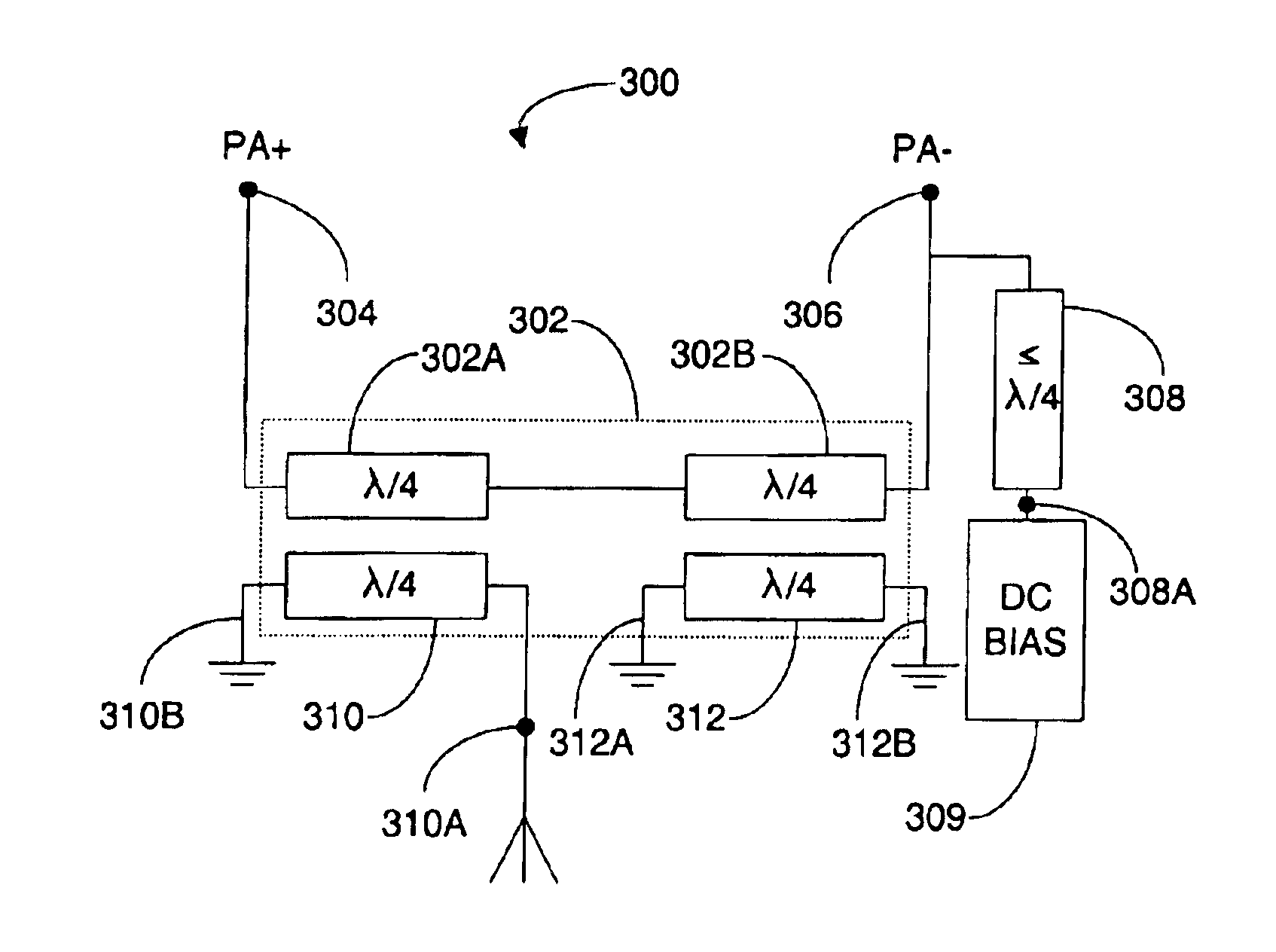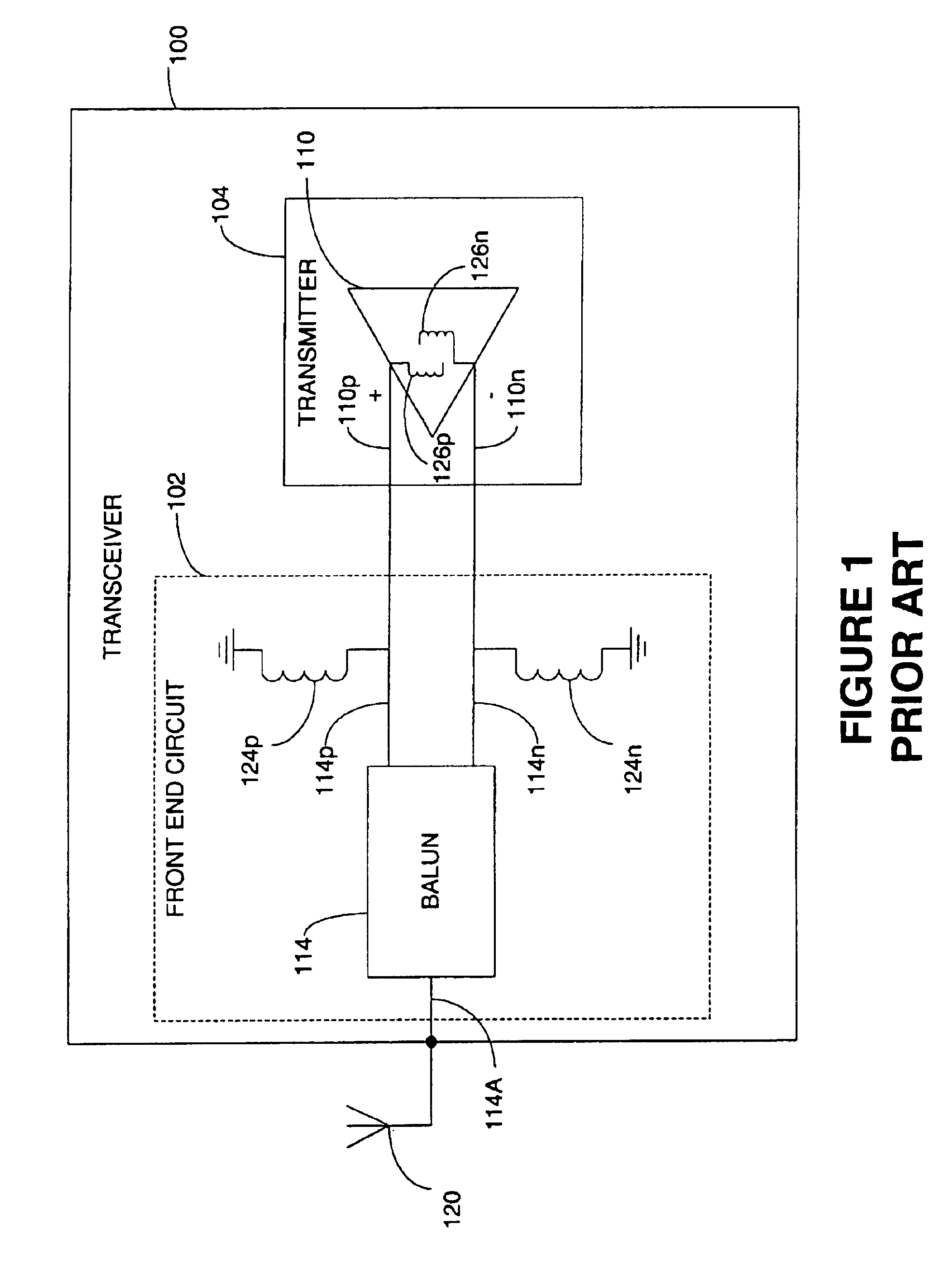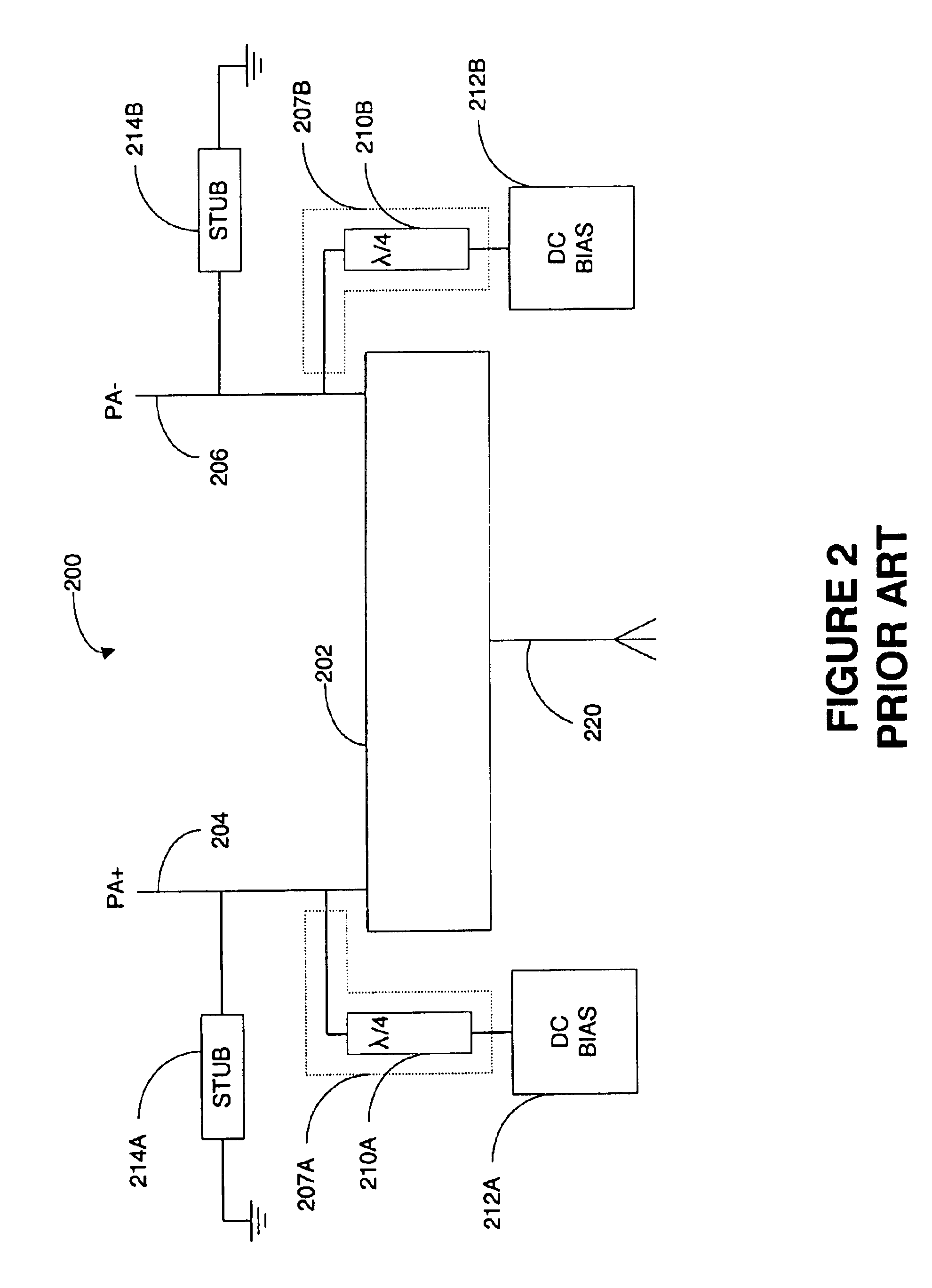Single ended tuning of a differential power amplifier output
a power amplifier and output technology, applied in the field of single-ended tuning of differential power amplifier output, can solve the problems of consuming too much precious space within the transmitter chip of effective integrated inductor, and affecting the performance of the amplifier
- Summary
- Abstract
- Description
- Claims
- Application Information
AI Technical Summary
Benefits of technology
Problems solved by technology
Method used
Image
Examples
Embodiment Construction
Several exemplary embodiments for single-ended tuning of a differential power amplifier (PA) output will now be described. It will be apparent to those skilled in the art that the present invention may be practiced without some or all of the specific details set forth herein.
The prior art approaches required each of the differential outputs of a differential PA output to be manipulated to compensate for the parasitic capacitance. The manipulations typically included one or more RF stubs added to the PA output circuitry. The prior art RF stubs were required to be very precise and very symmetrical to maintain the balance of the differential outputs. Any variation in the RF stubs could result in additional parasitic capacitance or parasitic conductance or other imbalances.
One embodiment of the present invention includes coupling the differential PA outputs with a conductive line that has a length that is a function of the wavelength divided by two (i.e., λ / 2, λ, 3 λ / 2, etc.). Conductor...
PUM
 Login to View More
Login to View More Abstract
Description
Claims
Application Information
 Login to View More
Login to View More - R&D
- Intellectual Property
- Life Sciences
- Materials
- Tech Scout
- Unparalleled Data Quality
- Higher Quality Content
- 60% Fewer Hallucinations
Browse by: Latest US Patents, China's latest patents, Technical Efficacy Thesaurus, Application Domain, Technology Topic, Popular Technical Reports.
© 2025 PatSnap. All rights reserved.Legal|Privacy policy|Modern Slavery Act Transparency Statement|Sitemap|About US| Contact US: help@patsnap.com



